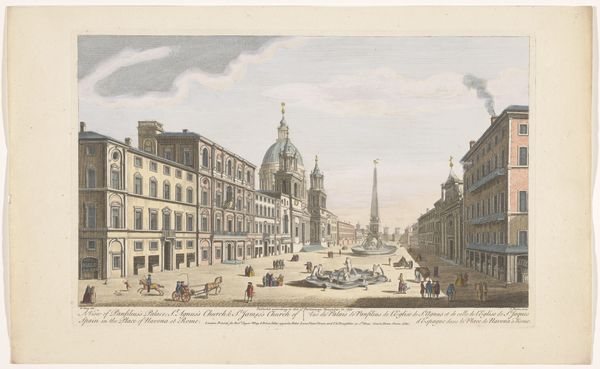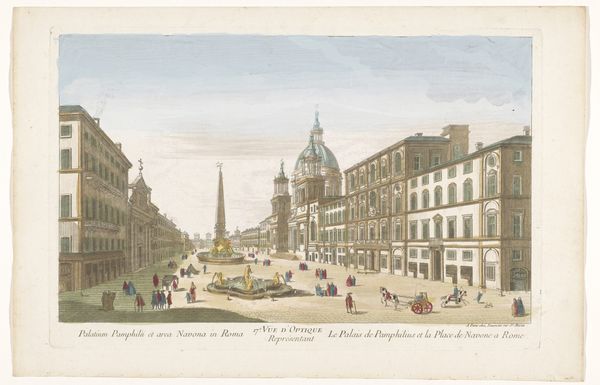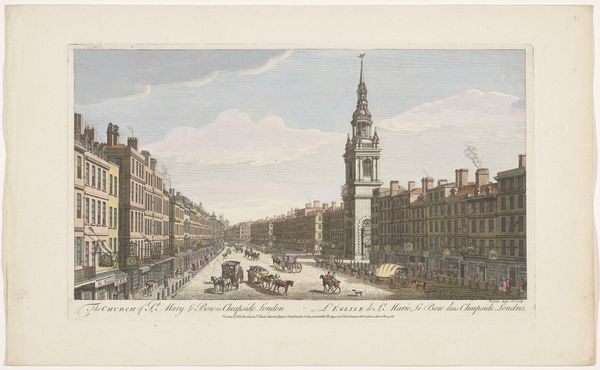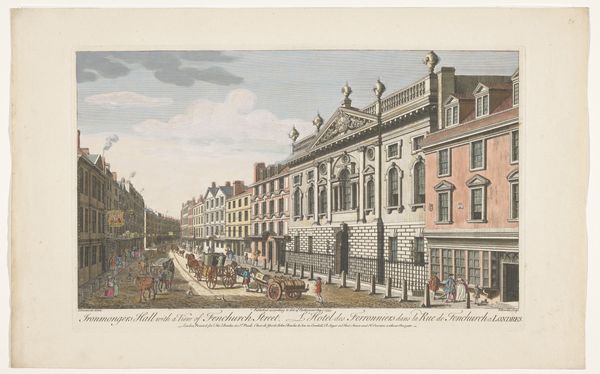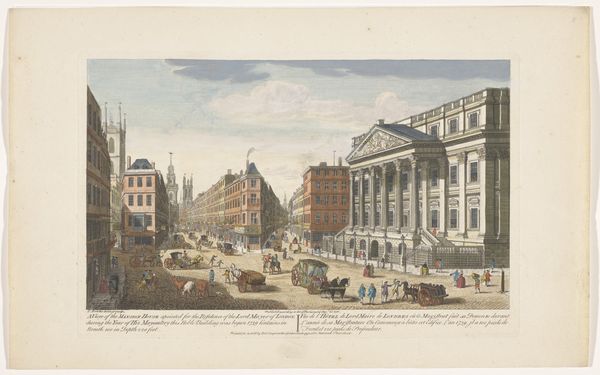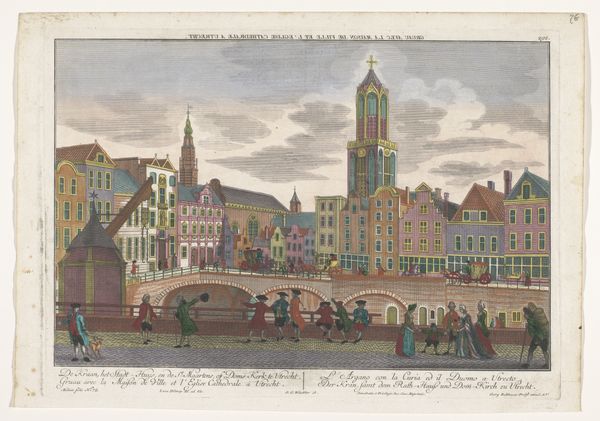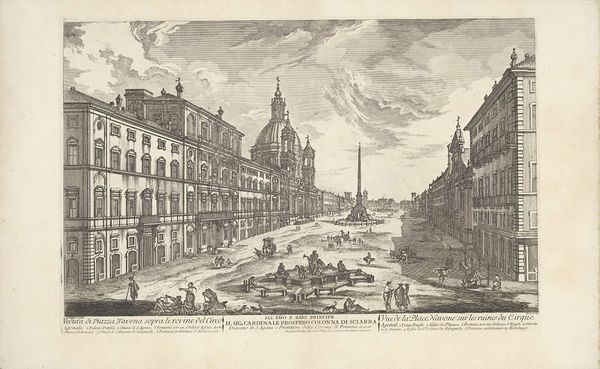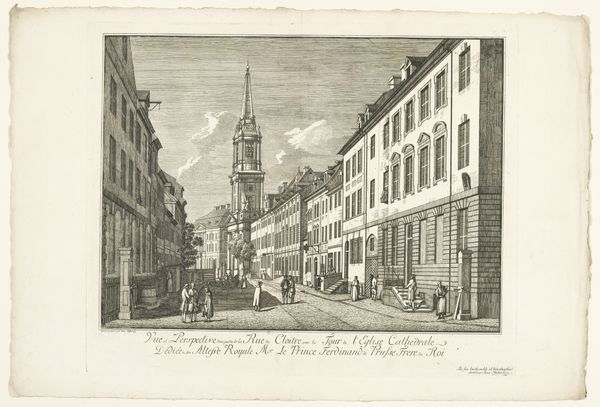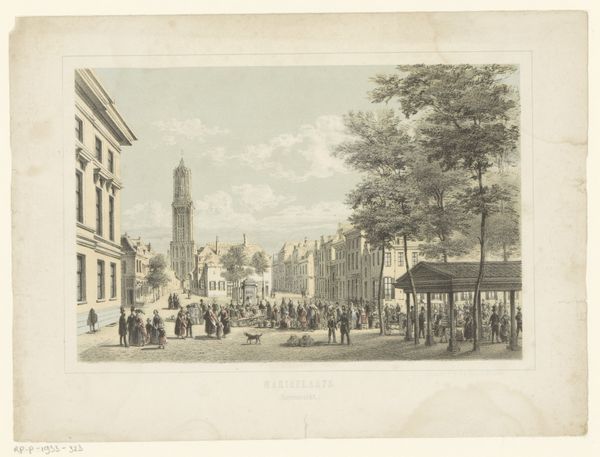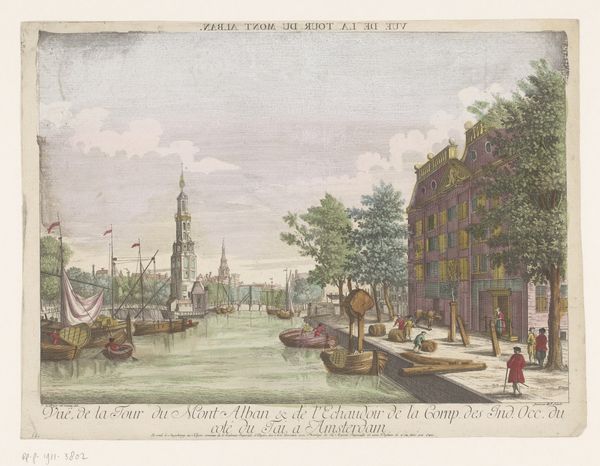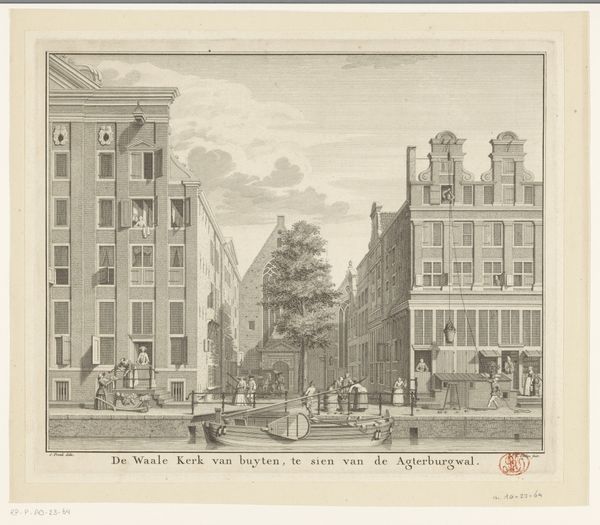
print, etching, engraving
#
baroque
# print
#
etching
#
old engraving style
#
landscape
#
cityscape
#
watercolour illustration
#
engraving
#
watercolor
Dimensions: height 258 mm, width 396 mm
Copyright: Rijks Museum: Open Domain
Curator: Robert Sayer's "Gezicht op het Monument to the Great Fire of London," made in 1752, presents us with a compelling cityscape. The medium involves both etching and engraving. Editor: It strikes me as oddly serene given the subject matter. The colors are muted, almost pastel. And the meticulous details contrast sharply with the chaos one imagines from a great fire. There's a stillness that feels... deceptive? Curator: Indeed, that stillness highlights a very specific cultural project. Remember, the Monument wasn't merely a memorial. It was erected to solidify a narrative, to offer a physical embodiment of London's resilience in the face of devastation. Look how Sayer centers it, creating a vanishing point to celebrate a re-built London! Editor: Absolutely, but consider the semiotic dimension. The Monument is a phallic symbol. Does its prominence subtly reinstate masculine power after collective trauma, thereby constructing not just resilience, but patriarchal dominance over London's symbolic rebirth? And the small human figures…they're dwarfed! Curator: Your analysis offers another layer. Yet, let’s return to the materiality. The very precise lines, the subtle gradations of tone achieved through etching and engraving: These techniques elevate the scene beyond mere reportage. Sayer wasn’t documenting chaos; he was crafting an idealized, orderly vision. The print is trying to establish control via the act of rendering visible! Editor: But for whom? Prints like this weren’t cheap, were they? This image circulated within specific social circles – likely those keen on projecting an image of stability and commercial might. It’s about who has access to defining and disseminating the visual history. The perspective reinforces existing power structures of the period. Curator: An astute point, particularly when we consider the political power invested into commemorative statuary during periods of dramatic rebuilding. The clean composition and clear lines are, formally speaking, baroque. They mirror the absolutist sensibility so present throughout 18th-century politics! Editor: It does beg the question: are we ever truly seeing the event itself, or merely witnessing its political and social repackaging for consumption and control? Curator: I appreciate you directing attention beyond the representational and towards the structural. This analysis prompts viewers to ponder the image, not merely as historical artifact, but also as an argument made visual through form and technique. Editor: A crucial insight that ensures this piece continues speaking across centuries, I would argue.
Comments
No comments
Be the first to comment and join the conversation on the ultimate creative platform.

